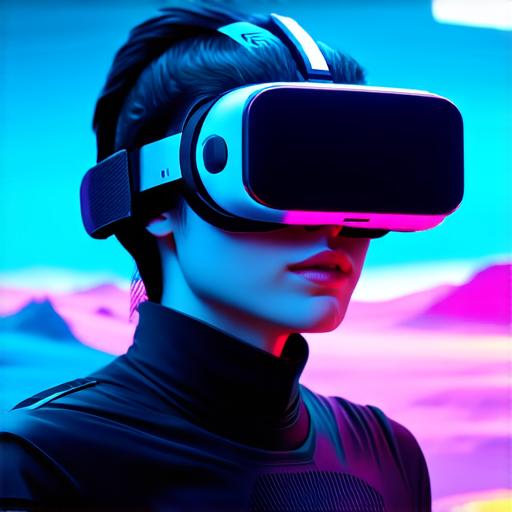Benefit 1: Improved Learning and Training
Virtual reality technology offers an immersive and interactive experience that can significantly improve learning and training outcomes. By creating realistic simulations of real-world scenarios, VR provides a safe environment for trainees to practice and develop new skills without the risk of injury or damage to equipment. For example, medical students can use VR to simulate surgical procedures, while military personnel can practice combat tactics in a controlled environment.
Benefit 2: Enhanced Productivity and Efficiency
Virtual reality technology can also boost productivity and efficiency by allowing workers to visualize complex data sets and perform tasks that are difficult or impossible to do in real life. For instance, architects and engineers can use VR to design and test building structures before they are constructed, reducing the need for costly physical models. Similarly, manufacturing companies can use VR to optimize production processes, improving product quality and reducing waste.
Benefit 3: Increased Engagement and Motivation
Virtual reality technology has the power to increase engagement and motivation by creating immersive experiences that are both entertaining and educational. Games and other interactive applications can be used to teach new skills and concepts in a fun and engaging way, making learning more enjoyable and effective. For example, language learning apps can use VR to simulate real-life conversations, allowing users to practice speaking and listening skills in a safe and supportive environment.
Benefit 4: Cost Savings and Reduced Risk
Virtual reality technology can also help businesses save money and reduce risk by eliminating the need for physical prototypes or simulations. For instance, car manufacturers can use VR to design and test new vehicles, reducing the cost of building and testing physical models. Similarly, aerospace companies can use VR to simulate complex aircraft systems, identifying potential issues before they occur in real life.
Benefit 5: Improved Accessibility and Inclusivity

Virtual reality technology can also improve accessibility and inclusivity by allowing people with disabilities or those who are unable to travel to experience new environments and activities. For example, virtual tours of museums and historical sites can be used to educate people with visual impairments, while VR therapy can help patients with PTSD or anxiety disorders overcome their fears in a controlled environment.
Conclusion:
Virtual reality technology offers numerous benefits that can be applied across various industries, from gaming and entertainment to healthcare and education. By creating immersive experiences that are both engaging and educational, VR technology can improve learning and training outcomes, boost productivity and efficiency, increase engagement and motivation, reduce risk and cost, and improve accessibility and inclusivity. As developers, it is essential to stay up-to-date with the latest trends and innovations in VR technology and explore new ways of using it to create compelling experiences that meet the needs of users across different contexts.
FAQs:
1. What are some examples of virtual reality applications in healthcare?
Virtual reality technology can be used in healthcare to simulate surgical procedures, train medical students, and provide therapy for patients with PTSD or anxiety disorders.
2. How can virtual reality technology improve learning and training outcomes?
Virtual reality technology provides an immersive and interactive experience that allows trainees to practice and develop new skills in a safe environment without the risk of injury or damage to equipment.
3. What are some examples of virtual reality applications in manufacturing?
Virtual reality technology can be used in manufacturing to optimize production processes, improving product quality and reducing waste.
4. How can virtual reality technology increase engagement and motivation?
Virtual reality technology creates immersive experiences that are both entertaining and educational, making learning more enjoyable and effective.
5. What are some examples of cost savings and reduced risk associated with virtual reality technology?
Virtual reality technology eliminates the need for physical prototypes or simulations, reducing the cost of building and testing physical models and identifying potential issues before they occur in real life.
